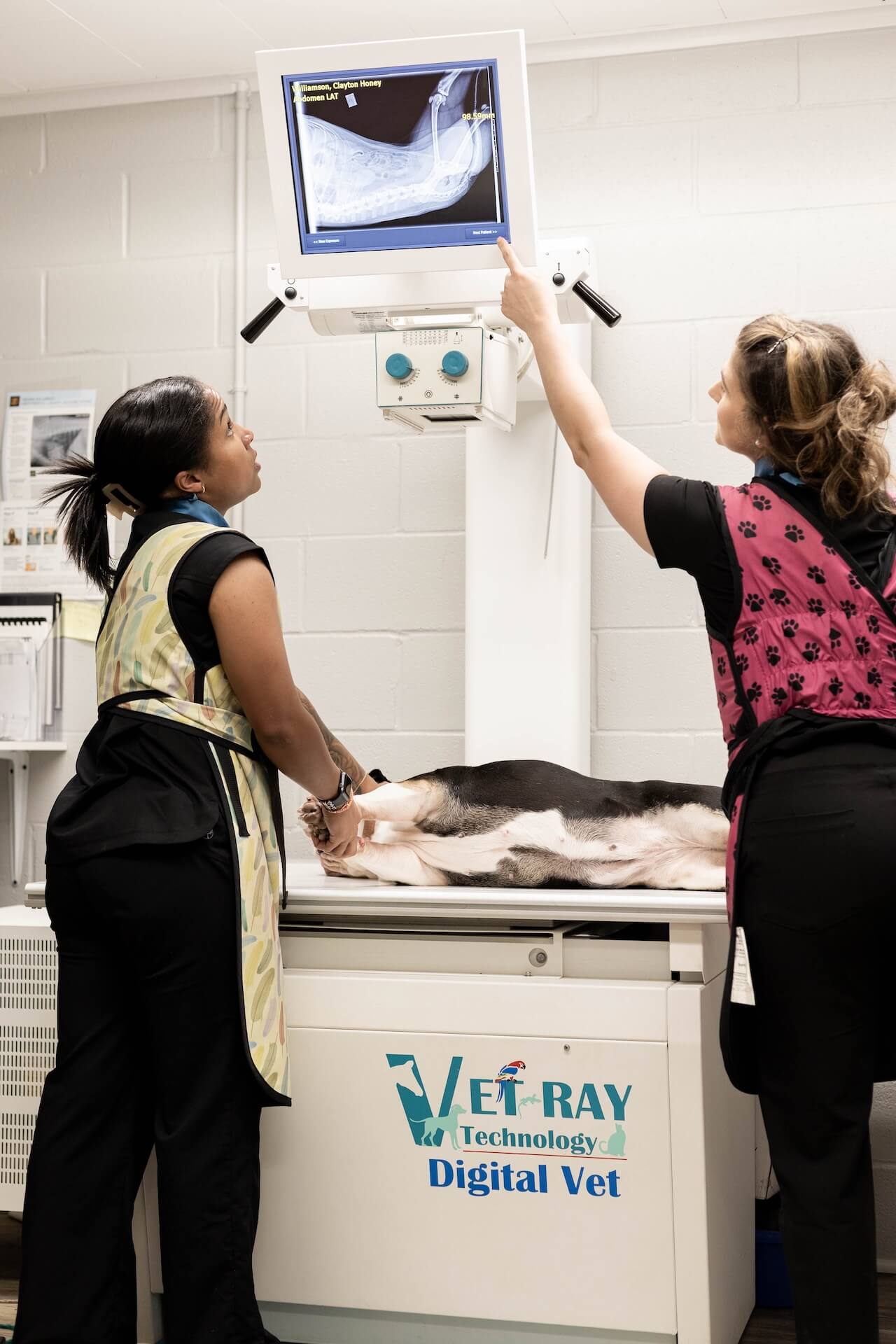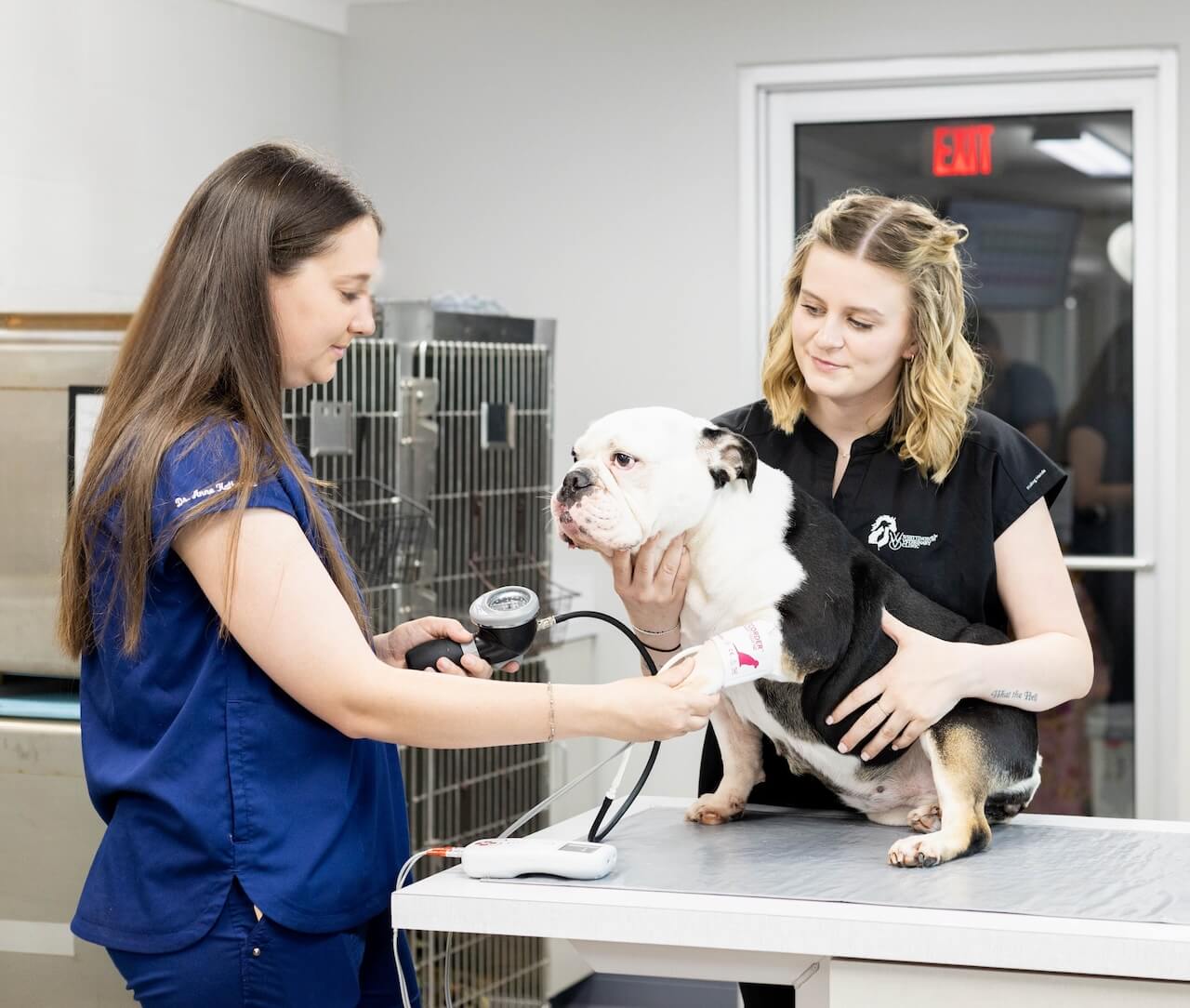Understanding Diagnostic Imaging for Dogs
 While lumps, bumps, or visible symptoms can signal a problem, many health issues in dogs aren’t visible on the surface. Just like in humans, we sometimes need to look inside to understand what’s really going on.
While lumps, bumps, or visible symptoms can signal a problem, many health issues in dogs aren’t visible on the surface. Just like in humans, we sometimes need to look inside to understand what’s really going on.
At Whittington Veterinary Clinic, we offer digital X-rays and ultrasound to help diagnose issues quickly and accurately.
We’ve addressed the most common questions about diagnostic imaging to give you clear, trustworthy answers—so you can feel confident in your dog’s care.
How Does Diagnostic Imaging Help Diagnose My Pet?
Diagnostic imaging—like X-rays and ultrasound—lets us safely see inside your pet without surgery. It helps us spot things that are out of place, shouldn’t be there, or show signs of disease.
For example, if your dog is vomiting, an X-ray can reveal signs of a blockage. If something looks suspicious, we may follow up with an ultrasound for a more detailed look before deciding if surgery is needed. Imaging gives us the information we need to make the best treatment plan with minimal stress to your pet.
Partnering with Specialists for Diagnostic Support
 At Whittington Veterinary Clinic, we may send certain X-rays or ultrasound images to a board-certified veterinary radiologist for consultation. This helps us gain a second expert opinion, confirm complex findings, or get additional clarity when something isn’t straightforward. It’s one more way we ensure your pet receives the most accurate diagnosis and the best possible care.
At Whittington Veterinary Clinic, we may send certain X-rays or ultrasound images to a board-certified veterinary radiologist for consultation. This helps us gain a second expert opinion, confirm complex findings, or get additional clarity when something isn’t straightforward. It’s one more way we ensure your pet receives the most accurate diagnosis and the best possible care.
What Can Diagnostic Imaging Detect?
Diagnostic imaging helps us identify the cause of your dog’s symptoms when a physical exam isn’t enough.
X-rays allow us to evaluate bones, the heart, lungs, and abdominal organs. We use them to check for issues like broken bones, tumors, hernias, foreign objects, or signs of disease in the chest or abdomen.
Ultrasound gives a closer look inside soft tissues. It’s especially useful for detecting organ abnormalities, hidden masses, intestinal issues, or changes in small structures like the adrenal glands and gallbladder.
If a heart issue is suspected, we may recommend an echocardiogram—a specialized ultrasound of the heart, typically performed by a veterinary cardiologist.
These tools help us get answers without invasive procedures, so we can treat your pet as quickly and accurately as possible.
Is diagnostic imaging safe for my dog?
Yes. X-rays are a common and valuable diagnostic tool in veterinary medicine. The amount of radiation they're exposed to is so minimal and temporary, that it's very safe. It may be a little bit stressful for your pet, but it’s generally over so quickly that they are done before they even realize anything is happening.
Ultrasound imaging is also very safe. It is a non-invasive technique that uses soundwaves to create pictures of organs and tissues. Your pet will lie down comfortably during the scan while the veterinarian will gently move the probe over the area of interest to capture images. Some pets may experience mild discomfort from lying still but this is usually temporary.
Would my dog need to be sedated for diagnostic imaging?
In most cases, no. We’re usually able to perform X-rays or ultrasounds without sedation. However, there are exceptions—especially if we need your dog in a specific position that may be uncomfortable, like for hip X-rays or certain orthopedic views.
If your dog is very anxious or in pain, sedation may be recommended to help them relax and minimize stress or discomfort. This would also allow us to get clearer, more accurate images. Most dogs tolerate imaging very well without the need for sedation, but if needed, we’ll always discuss it with you beforehand.
At Whittington Veterinary Clinic, we use diagnostic imaging to get the answers your dog needs—safely, accurately, and with as little stress as possible. Whether we’re evaluating an illness, checking for injury, or confirming a diagnosis, our goal is to give you clear insight and trusted care every step of the way. Have questions or need to schedule an appointment? Call us at (337) 893-8522—we’re happy to help.
